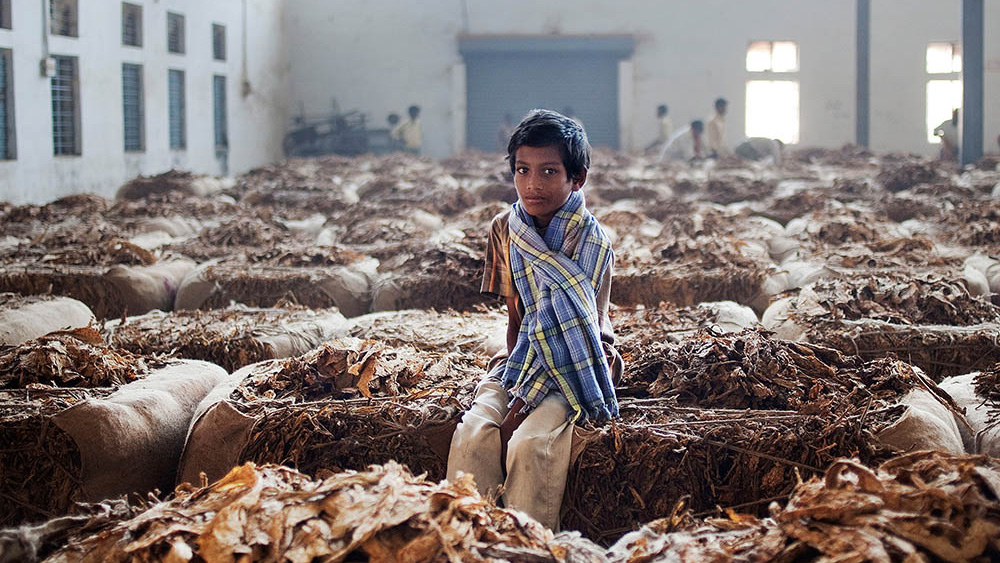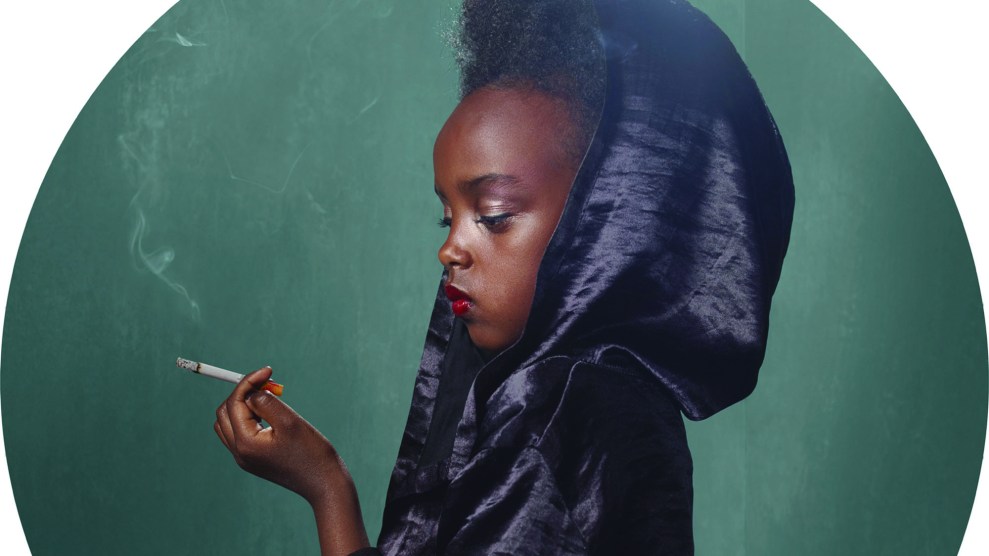Over the course of 10 years, Italian photographer Rocco Rorandelli traveled to nine countries active in the tobacco industry, documenting its impact on the environment and the economy, as well as on the health of smokers and workers. This massive investigative documentary project, supported in part by the Fund for Investigative Journalism, looks through the “smokescreen” of the industry, as Rorandelli puts it.
“I want to provide a way for people to investigate the reality of the tobacco industry,” Rorandelli says in a promotional video for the book, “and realize how smoking is not just detrimental to the final user, but also along its entire value chain.”
His work begins the fields, where, according to his research, 9 million acres of trees globally are subjected to deforestation for tobacco. He uncovered exploitative child labor practices, including undocumented Latino children working in American tobacco fields, and thousands of children working on tobacco farms in India. He shows how workers in production facilities are exposed to dangerous chemicals and how aggressive, deceptive marketing strategies home in on new customers—often young, underage smokers across the world. Rorandelli’s project follows through to the logical end, to smokers facing life-threatening illness.
The photographs exude a calmness that belies the deadly ramifications of the industry he’s photographed. It feels like a fitting metaphor for the industry itself—quiet and cool on the surface, with well-hidden dangers all through its supply chain.
The result of his decade-long project is Bitter Leaves (Gost Books), scheduled to be released in July 2019 . With text and insightful infographics by noted tobacco industry foil Judith MacKay, the book promises to be more than just a lush photographic exploration, delivering a visual, research-driven indictment against the global tobacco industry.
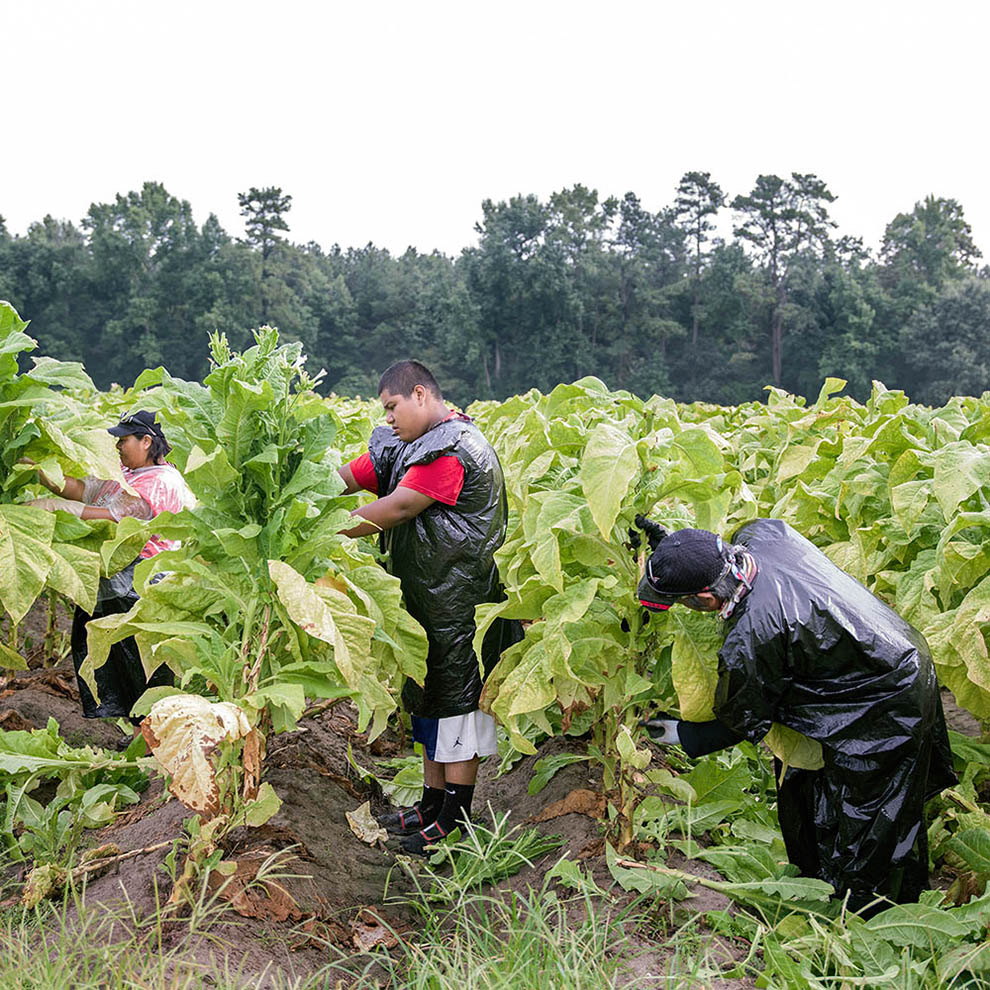
Miguel, center, works in a tobacco field in the southern US. His parents also work in the fields.
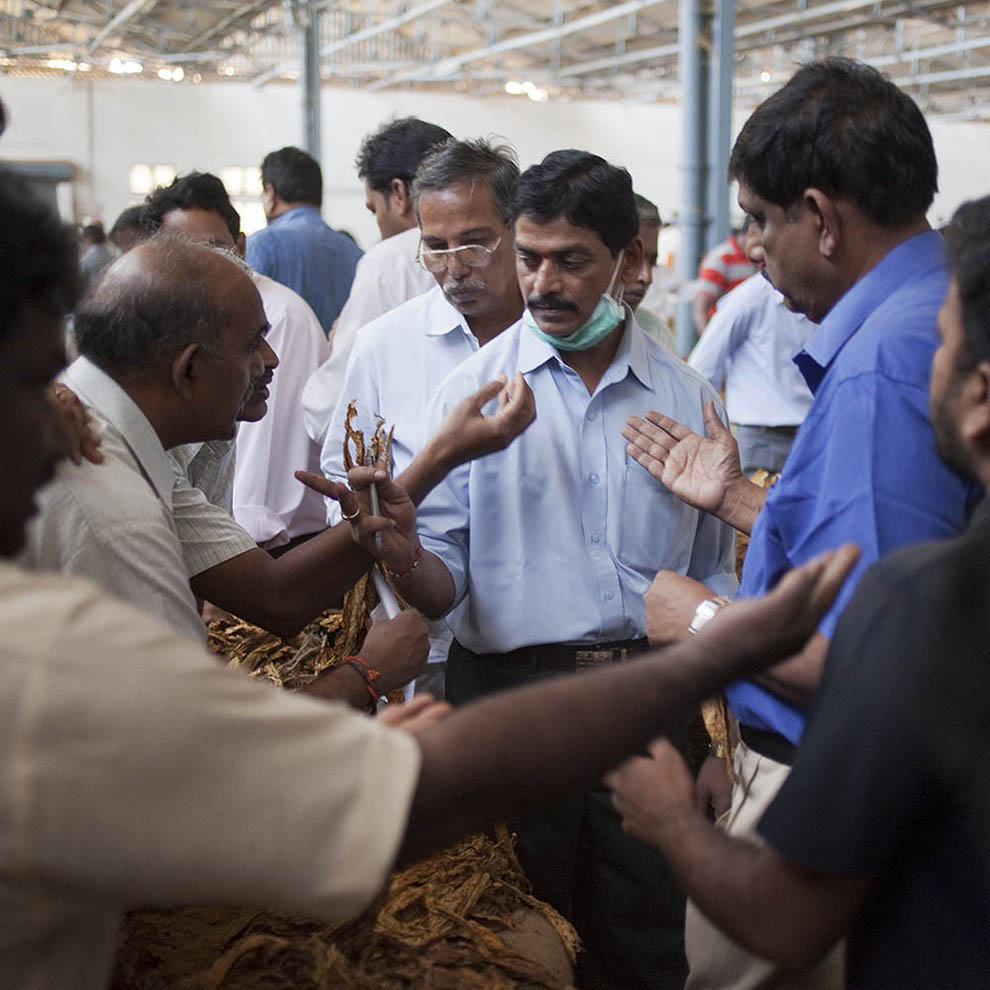
P. Jayarama, center, is the auction superintendent of the Periyapatna Tobacco Board in India. Tobacco prices range between 52 and 130 rupees per kilogram (75¢ to $1.86 per kilogram).
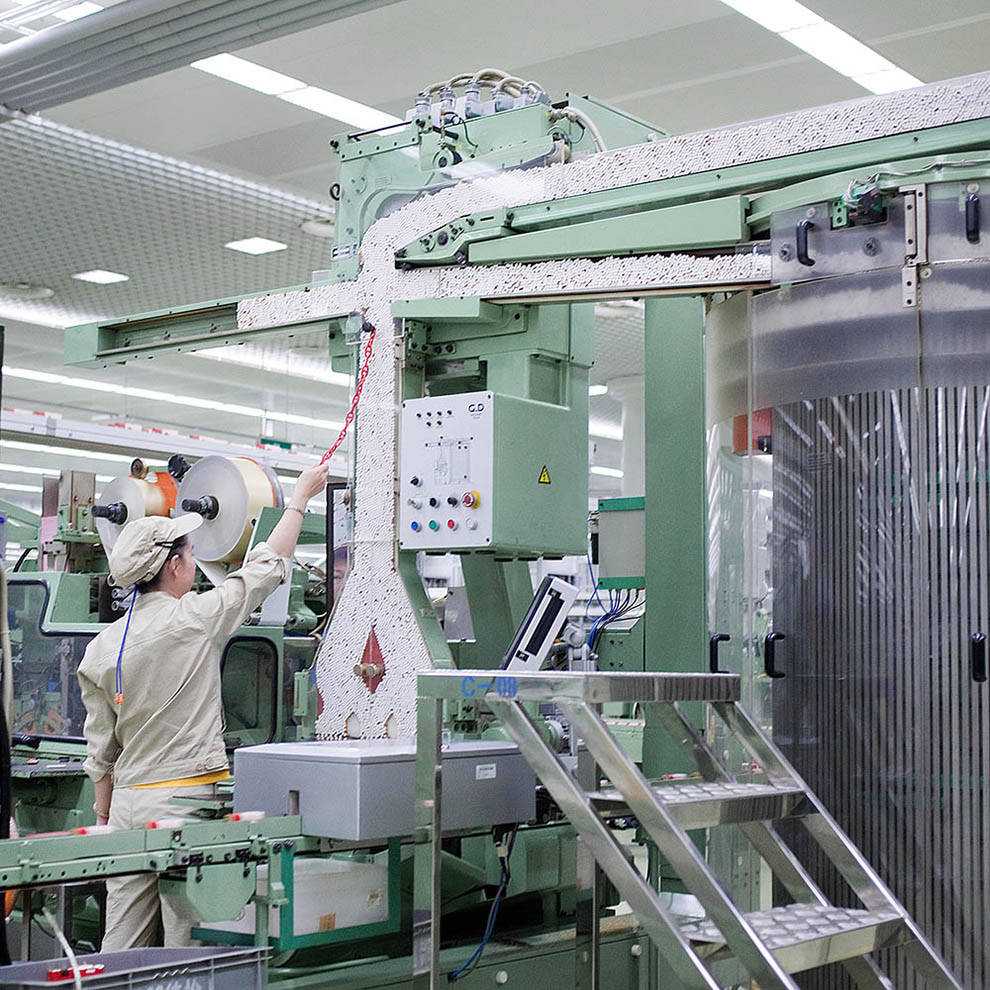
A worker attends to the Hongta cigarette factory production line in Yuxi, China. The company claims that this is the world’s most advanced cigarette production line, with fully automated robots and Italian rolling machines. More than 135 billion cigarettes are produced in the factory per year, covering 12 percent of China’s total production.

A scene from the 2011 World Tobacco Expo in München, Germany.

Pacifici Serenella, 71, rests in the surgery ward of the European Institute of Oncology in Milan, Italy, waiting to be operated on for a lung cancer. She smoked since she was 17.
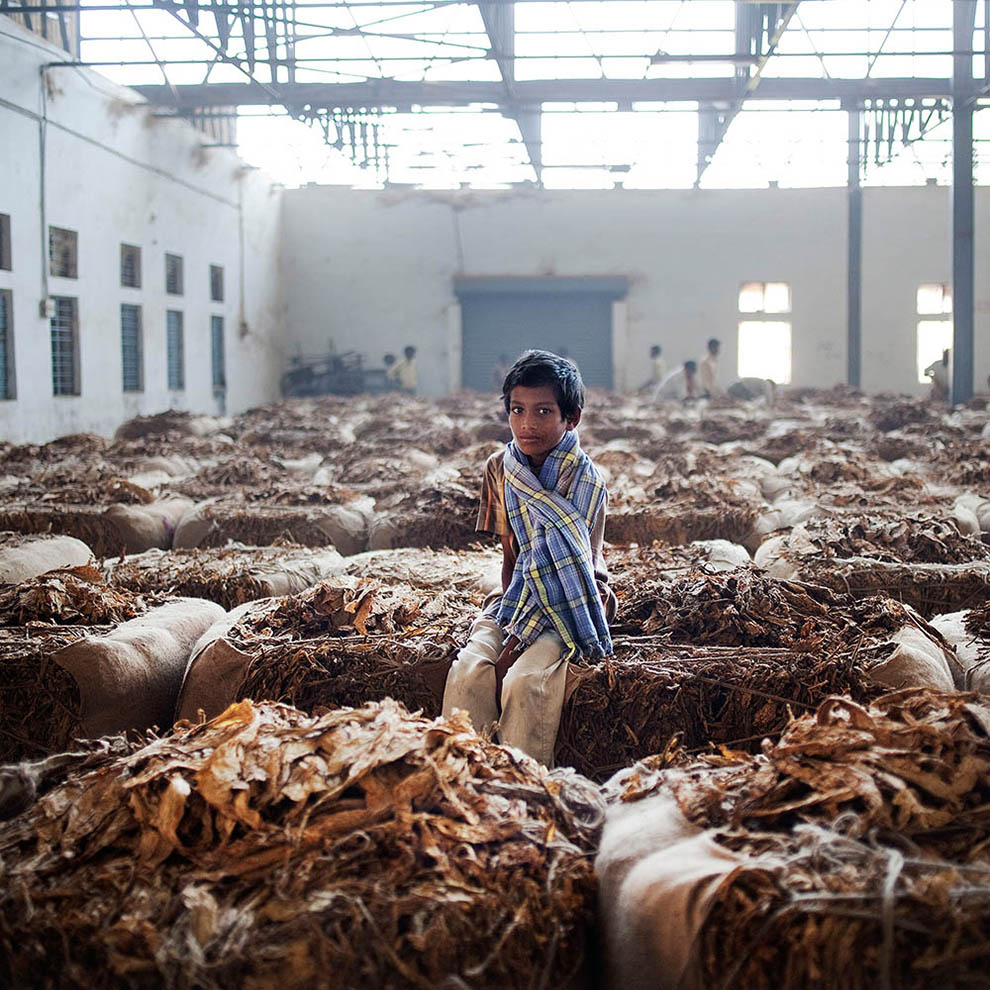
A farmer’s child on the Periyapatna Tobacco Board auction floor.

A view of Durham, North Carolina’s American Tobacco Historic District. The city restored and converted the 1800’s empire of American Tobacco Company into restaurants, shops, and other amenities. Although cigarettes are no longer manufactured in Durham, the area “preserves the physical legacy of one of America’s great entrepreneurial success stories,” as American Tobacco says in its promotional materials.
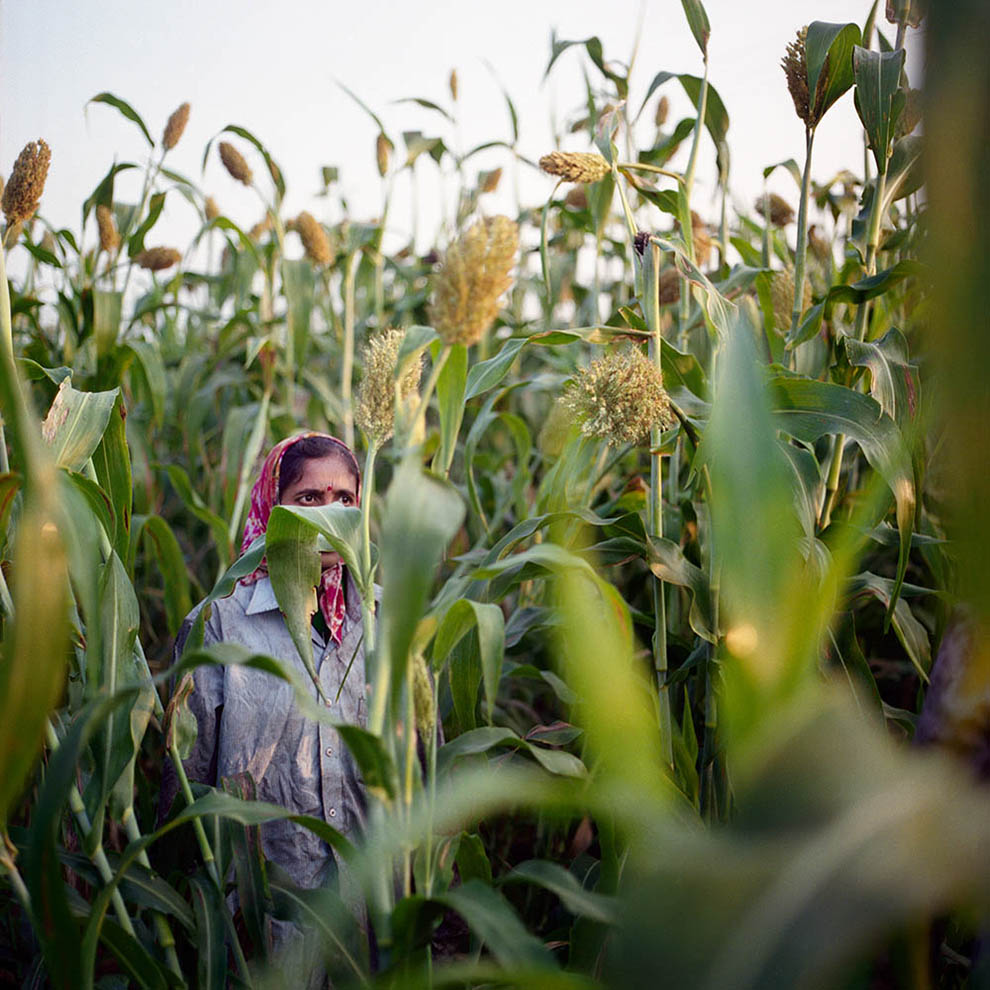
Indian farmer Dipali Loharin stands in field of mixed of tobacco and sorghum plants. Mixing crops aids in restoring soil balance and helps farmers reduce their dependency on tobacco. In Nipani, a city south of Mumbai, almost 70 percent of tax revenues derive from one type of bidi tobacco. In India, some two million people are engaged in leaf collection and 4.4 million people are employed directly in bidi rolling. It’s an informal, cottage-linked industry, the nature of which prevents workers from being organized in large, powerful unions. In addition, bidi tobacco is not regulated by any governmental institution and prices are controlled only by dealers. For these reasons, bidi tobacco is less remunerative for farmers than the Virginia flue-cured variety, used for cigarettes.

A woman works for Djarum Black Menthol during the R&B parade, in Jakarta, Indonesia, organized by Djarum. These women are usually students and are employed as freelance workers, but have to sign a contract agreeing not to work for any other tobacco company. Their stipend is between 250,000 and 350,000 rupiah per event (around $17 to $25), depending on how many hours they work. The company is the third largest tobacco producer in Indonesia. Tobacco companies in the country have a high-profile presence in music, sport, and cultural events. The World Health Organization and many NGOs involved in tobacco control claim that these sponsorships are clearly aimed at appealing to new teenage consumers.
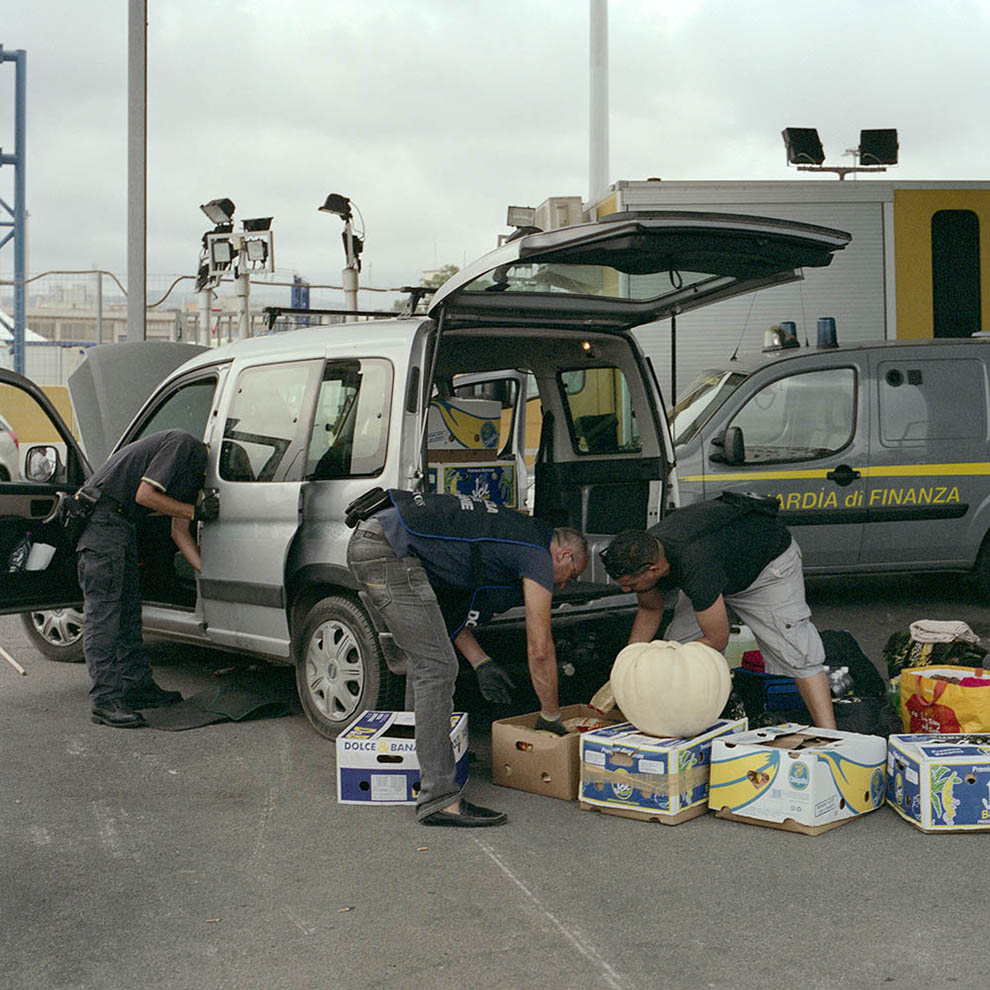
Officials perform a search operation on cars arriving from Tunisia in the port of Civitavecchia, Italy.
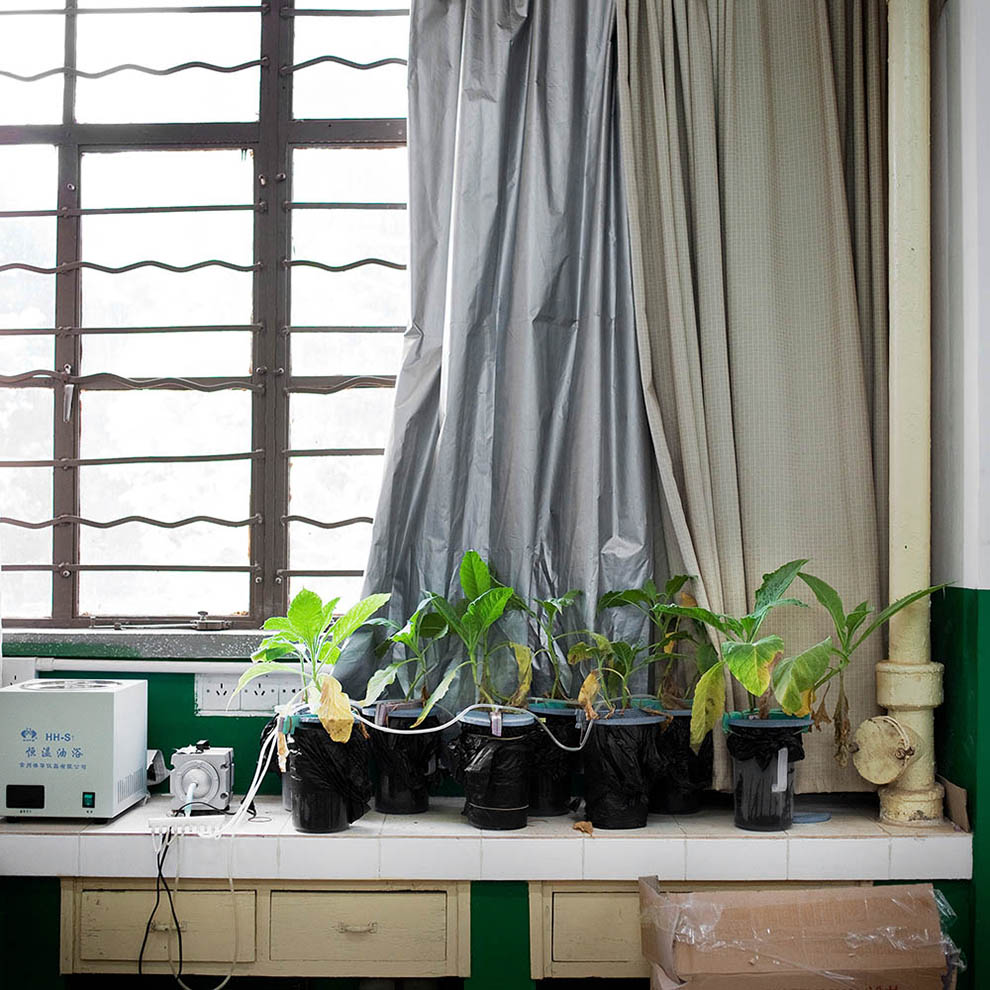
In the plant breeding facilities of the College of Tobacco Science at China’s Yunnan Agricultural University. In China, about 1 million hectares of land are utilized to grow tobacco, 40 percent of which is in the province of Yunnan. Overall, every year the tobacco industry provides about $60 million of tax revenues to the central government of China. For this reason, the government funds research on tobacco, mainly to produce higher yield pest-resistant varieties.
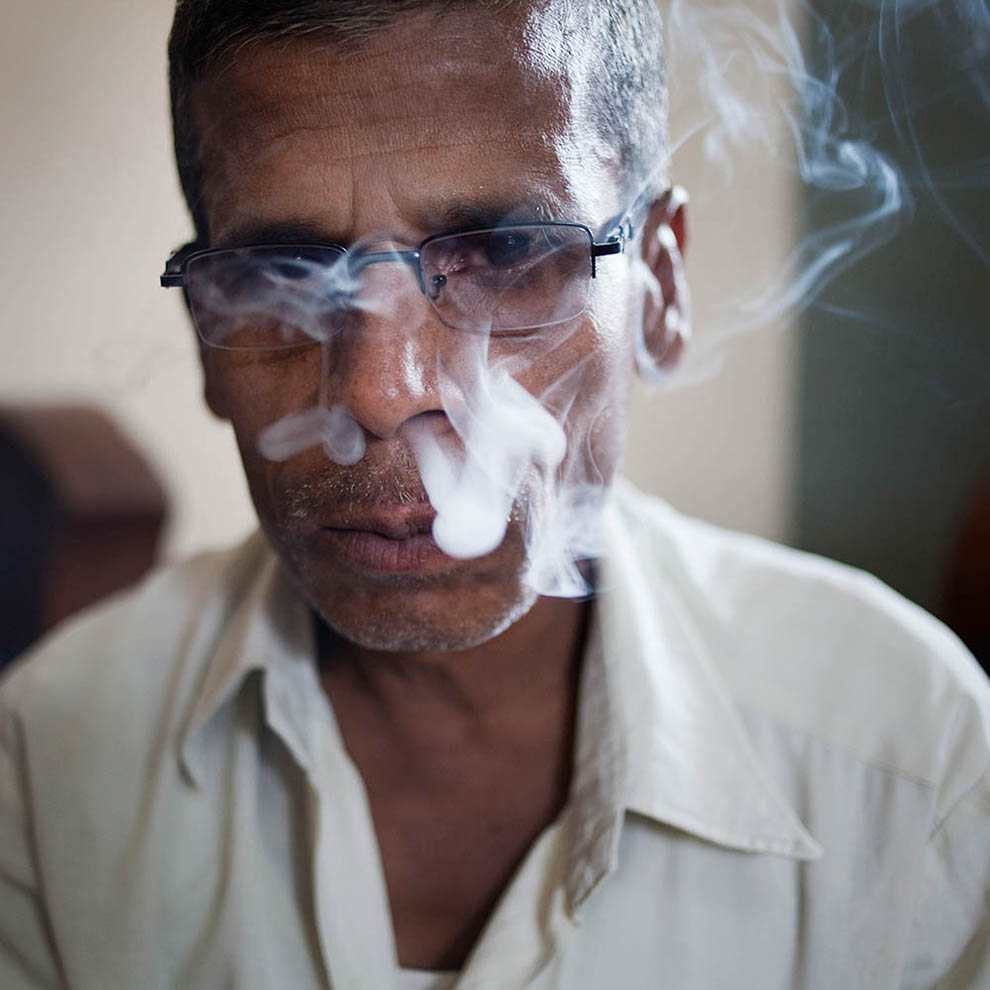
A bidi tobacco taster is employed by Shah Chhaganlal Ugarchand, one of the largest tobacco commission agents of Nipani. Tasters smoke up to 100 bidis a day to try and grade the different batches of tobacco before buying them.
